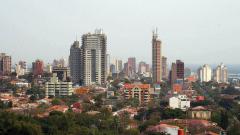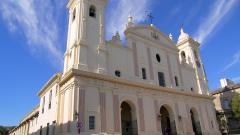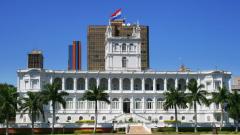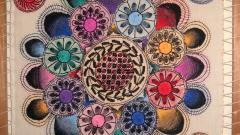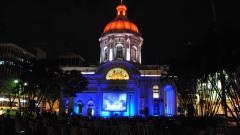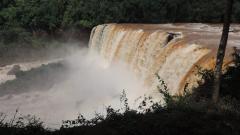 travel to Paraguay
travel to Paraguay
GENERAL CHARACTERISTICS
The Republic of Paraguay is an American country located in the central zone of South America. It is administratively subdivided into seventeen departments and a capital district, all of them, occupied by 7 022 646 citizens. It limits with Argentina to the southeast, south and southwest; with Bolivia, to the north, and with Brazil, to the east. Paraguay is also the fifth smallest country and the fourth less populated in South America. Its territory is composed by two different regions separated by the Paraguay River, the Oriental Region which is the most populated, and the Western Region, which is part of the Chaco Boreal.
Its capital and most populated city is Asunción with 524.190 inhabitants, and the Guaraní is the official currency in legal course, likewise, it shares denomination with one of the two official languages of the Republic, together with the Spanish.
Guaraní, as a language, mainly in its modern variant, is completely spreading and is spoken by 90% of the population. This language has indigenous origin as it was used by indigenous tribes who were settled in the Andes mountain range. Had a rapid development, because was the language using by the national army in the battlefield. Since 1992 it has a formal recognition thanks to the Paraguayan constitution.
The weather in Paraguay could be divided in two principal categories: Humid subtropical climate, predominant in the south region, and tropical savanna climate that occurs in the north. Because of that, the thermal range between the different seasons it’s barely ten degrees, the summer is generally hot and humid surpassing, by average, 30ªC that will cause, in certain times, a suffocating heat feeling. Summer starts on December and finishes on March.
On the other hand, winter it is the driest period and is characterized by soft temperatures, having by average, between 15ªC-20ºC. Rainfalls are also continuous all year long.
HISTORY
The pre-Colombian period was a troubled period where several tribes fought against each other, to conquer the territory that existed between the Paraguay and Paraná rivers. The indigenous Guaraní were the biggest and most highly developed tribe, that’s why they managed to impose their culture on the other groups. That culture, even nowadays, is very present in the Paraguayan idiosyncrasy.
Later on, after almost three hundred years of Spanish dominance, Paraguay started its independence movement in 1811, precisely in May, due to a riot against the former ruler, Velasco who quit his functions by force, and handed his weapons, and his money. In June of this year, the riot’s leaders began to govern the country, but several political problems delayed the official independence Paraguay’s proclamation until 1842.
TOURISM
Despite of, being considered one of the less development countries on this matter in the continent, in recent years it has experienced an interesting growth. According to the statistics of Senatur, official organization responsible of tourism promotion in Paraguay, the number of tourist has increased an 87% between 2014-2015.
Asunción, is settled between seven hills and it is known as “Green capital city of Latin America”, because of the quantity of gardens and greenery that the city contains which have a crucial importance in its natural scenery.
Furthermore, it has a first-class infrastructure that made the city an ideal destination for business tourism. However, it isn’t the only activity that you could enjoy. It also possesses a lot of commercial premises where you’ll savor its excellent gastronomy, do shopping or enjoy the night atmosphere.
Regarding heritage tourism, the capital has multitude of monuments that give you a chance to know the history of the city. Its wonderful monuments and museums, highlight its historic center, the Metropolitan Cathedral, the Palace of the Lopez, the Pantheon of the Heroes among others.
In its surroundings, we will find the central district, the most industrialized, where we can enjoy all kinds of crafts, such as Areguá that stands out for its work in clay, while in Luque, Itauguá and other cities they work various materials such as stone , silver, or its traditional ñanduti weave.
Also around its Paraguay and Paraná rivers, and its multiple lakes, an intense tourist activity is developed proposing to the visitor activities such as cruises, zones of sport fishing and diving.
Thanks to its forest areas and hills ( Mbaracayú forest) we find the ideal environment for adventure tourism and we can go hiking, rappeling ... Within these areas you can also see a large amount and variety of flora and fauna, especially birds, of which more than seven hundred varieties can be observed from privileged environments such as Chaco Húmedo, Chaco Seco, Pantanal, Canindeyú Caaguazú ...
Another of its most popular destinations is Ciudad del Este, 327 km away from the capital. It is a national reference point in terms of shopping tourism, thanks to the existence of a tax-free zone, although this is not its only activity. Nearby we find a spectacular waterfall, Salto del Monday, where we can enjoy wonderful views and an enviable natural environment, and also, because they are very close to the world-recognized Iguazu Falls, it will go unnoticed by most part of tourists.
Finally, we will stand out the Jesuit Missions of the Holy Trinity of Paraná, the best preserved and largest Jesuit settlement in the country, located twenty-eight kilometers northeast of Encarnación, in the district of Trinidad in Itapúa, named a World Heritage Site by UNESCO in the year 1993. And the Encarnación’s Carnival, the most important in the country, attracts 50.000 tourists on average every year. Thanks to which, the city has experienced a remarkable development, in recent years, becoming an important national tourism referent point renewing its accommodation infrastructures and implementing shopping centers, sports halls and even artificial beaches in order to face the recent increase of the demand.
After this summary we could determine that, despite of being an unknown and under developed tourism destination, Paraguay possesses varied and attractive natural and cultural spots which, together with an always predisposed population and friendly citizens and increasingly steady state support, get the perfect assembly, thanks which you’ll enjoy of a different and enriching trip.
practical information
useful information before leaving
Language
Religion
Political regime
Currency
Warnings
Documentation
Vaccines
recommendations
Recommendations before traveling to Paraguay
- Due to the intense heat during the austral summer, we advise visiting the country during the winter, when the temperature is more pleasant, take place, between May and September.
- We must take into account the presence of dengue transmitting mosquitoes, if you notice any of these symptoms (high fever, severe headache, generalized muscular discomfort, small blisters in the mouth and reddish spots on the skin and, sometimes, nausea and vomiting), go quickly to the nearest hospital. However, it can be prevented by using fresh and comfortable clothing, with light colors and natural fabrics that cover most of the body and using a repellent in the uncovered, This insect needs water to do its reproduction progress, so the Paraguayan Ministry of Health recommends closing hermetically or empty any container in which drinking water is stored.
- It is also advisable to consume mineral water, with which we will avoid typhoid fever, present mainly in the department of Alto Paraná, and gastro-intestinal diseases.
- Each traveler may introduce a maximum of US $ 9.999.
- Practicing rural tourism, we must be cautious because in these areas the presence of poisoned reptiles is common.
- The prefix for international calls is + 595 but each city has its own: Asunción +021, Ciudad del Este +061, or Concepción +031 are some of the prefixes of the main cities.
- The emergency telephone number is 911, if we are in Asunción we will dial (021) 441.111 and in Ciudad del Este: (061) 570.751.
- The contact of the national emergency secretary is (+595 21) 440 997 Web: http: //www.sen.gov.py/
- Asunción is safer than the rest of the cities, but you aren’t exempt from robberies. A way to prevent them is monitor your belongings and not showing signs of ostentation, especially in large cities and main tourist centers.
- If you visit Ciudad del Este, we inform you that it isn’t advisable to walk through its streets after 5:00 pm, since all the shops are closed and the presence of pedestrians is minimal.
- Not is it advisable to walk or drive at night, through the departments of Alto Paraguay, Boquerón and Presidente Hayes due to the decrease in population at that time of day and the poor conditions of the public lighting and roads.
- Paraguay doesn’t have a metro network and the bus system, even in the main cities, can be improved, so if you want to move we recommend using long-distance buses or taxi, because they are safe and very cheap.
- The sanitary service in the main Paraguayan cities is of good quality, counting on good professionals and equipment.
- In Paraguay, the common voltage is 220 V. The frequency is 50 Hz. If these data do not match with your country of origin you will need an adapter to make your electronic devices work and to plug them into the electricity network.
- Most stores open at 7 in the morning and close between 12.00 h. and 3:00 p.m. especially in the summer months. Then they close again at 7:00 p.m. Banks open from 7.00 h. to 10.30 h. in summer and from 7.00 h. to 11.30 h. in winter.
- The rules of regulation are quite lax, but all foreigners have the obligation to register their entry and exit from the country, without exception, this procedure is free and can be done only in immigration checkpoints enabled at border crossings, in presence of officials of Migrations duly accredited. We also recommend you visit the web page of the General Directorate of Migrations to obtain updated information and adjusted to your case. (https://goo.gl/SUymb4)

